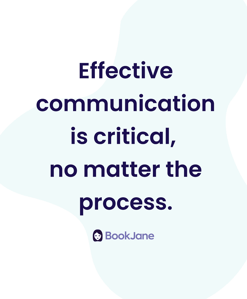Challenge 1: Adapting to new management
In our fast-paced world, it’s routine for health and senior care organizations and facilities to change their strategies, structures, and processes. New leaders and new management teams are often the drivers of these transitional moments. Because administrative staff have invested time and energy learning procedures introduced by previous decision makers, they sometimes have difficulty adapting to the new management’s way of doing things. Transitional periods can be rocky, often marked by dips in productivity and lowered morale.
What to do:
Communication is key. Decision makers should concentrate on describing and demonstrating to employees exactly how the change benefits them. Hold regular staff meetings to introduce changes and explain why, how, and when they’ll be implemented. Employees are more open to change when the rationales for them and the benefits they bring are clearly communicated.
Challenge 2: Adapting to innovative technology
Organizations need to constantly be implementing new, innovative technologies to keep pace with partners and optimize their workflows. Many innovations are developed not only to streamline processes at the organizational level, but with the employee experience in mind, making tasks easier, more flexible, more engaging and less stressful.
Even so, adapting to innovations always means another learning curve. Administrative staff is sometimes caught off guard when employees, instead of embracing a new technology, underuse it, use it inconsistently or resist it entirely.
What to do:
Again, communication is crucial. Empower employees by informing them ahead of time about innovations and explaining how they’ll benefit. To ensure a new technology is adopted smoothly, show employees how it makes their job easier. Orient staff to new technology through open training sessions with clearly stated goals. Have expert users and other resources on hand to answer questions.
Challenge 3: Keeping Staff Engaged
Many day-to-day health care staffing practices, such as shift callouts and standard scheduling techniques, are slow and complicated, keeping employees at a distance from the hiring process and leaving them feeling undervalued. Not only are such procedures inefficient and expensive, they heighten staff turnover due to low staff engagement.
Top organizations prioritize staff retention by making sure staff feel supported and keeping them engaged. At health and senior care facilities, this is done through innovative workforce management and scheduling softwares–like BookJane–that meet employees on their terms where they spend the bulk of their time–on their mobile devices.
These innovations are indispensable for human resources by streamlining recruitment and retention and improving the staff experience. Where before, staff had to engage with outdated mass callouts, now staff can exercise the autonomy to sign up for shifts on their own time, from their own phones, and to communicate directly with upper management at their mutual convenience.
Challenge 4: Lack of Communication
In many health and senior care organizations, the public-facing side–patients, families, and prospective clients–gets all the attention when it comes to creating and maintaining effective channels of communication. But internal communication is equally important. When staff-to-staff and staff-to-management lines of communication are overlooked, effects can manifest in many ways–from operational and hiring inefficiencies, to low employee engagement, increases in staff turnover and increased liability risk.
What to do:

Organizations need to find and deploy workforce management systems that foreground internal communications. These days, that means using platforms that are accessible by mobile device. When recruiting is easier and lines of contact are more open and accessible, staff feel more connected and valued.
Challenge 5: Effective Communication
Staffing is all about employees. Maintaining the highest possible level of staff satisfaction, connection, and engagement is the ultimate goal. As organizations are in constant flux, this can be challenging, and can leave some staff members feeling out of the loop.
What to do:
Effective communication is critical, no matter the process. Whether an organization is introducing staff to a new management approach, training employees to use a new app, or deploying a new workplace management system, measures should be in place that keep staff feeling in step and supported along the way.
To learn more about how BookJane helps healthcare facilities boost employee engagement and improve workplace communication, view our other blogs.
Learn how BookJane helps health care facilities improve shift fulfillment by 40%, dramatically decrease their time to fill shifts, and significantly reduce burdensome scheduling and administration time.





